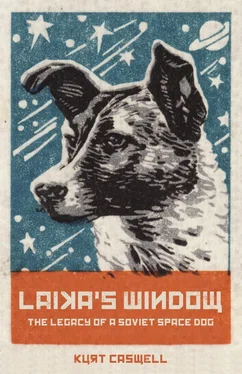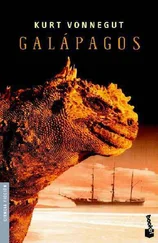Having come this far, having gone that far out, how can we turn our back on human space exploration, on the adventure that is Mars, when such adventures have the power to free us from our myopic and self-serving perceptions? How can we turn our back when such an adventure may bring us to understand again that we are in the universe together, and it is our togetherness—our empathy for all living creatures—that sustains us? Instead of squabbling and warring on Earth, all of humanity might join in the project to colonize Mars. How can we turn our back on Mars when, as Hubert Planel writes in Space and Life , “exploring faraway hospitable planets directly has always been Man’s dream”?
¤
John Karas, vice president of business development at Lockheed Martin, believes it will require a cooperative effort to colonize Mars. “Space is a matter of national pride,” he said. “Nations want to be in space because it is the technological high ground. But I don’t see a Space Race today so much as a space cooperation, or collaboration. Likely Mars will be a joint venture among a consortium of nations. We can’t do it alone. To go to Mars, we will need to collaborate with spacefaring nations. This will be a human endeavor, not an American or a Russian endeavor.”
After the divisive US presidential election of 2016—which is more a thermometer for the health of our country, even for the health of our species, than a cause for its illness—it’s clear that our government is failing, at least in the short term, to unite us as a people. But perhaps Mars can do it. Perhaps Mars can do even more. Perhaps Mars can unite the US with the rest of the world, especially with our longtime partners in space exploration, Russia. For the past seven decades or so, cooperation in space has mostly transcended whatever political harangue is in play. Even with tensions building between the US and Russia over Syria, charges of Russian interference in the 2016 US presidential election, Russia’s annexation of Crimea, US sanctions against Russia, Edward Snowden, you name it, Russian president Vladimir Putin made this statement in 2016: “We attach great importance that despite whatever difficulties we face on Earth, people in space work shoulder to shoulder, hand in hand, to help each other and fulfill tasks that are essential not just for our countries but for all of humanity.” Maybe we need a Mars mission to bring the world together in common cause. Mars could be this century’s greatest creative act, the renewal of the world’s science and technology, political and economic relationships, art and artistic form. Mars can be the physical expression of everything that is good about us.
“Yes!” Karas told me when I asked him what he thought of these ideas. “I love these ideas. Without cooperation, we’re going nowhere. And the technology required to go somewhere, to go to Mars for example, will benefit everybody on Earth.” Consider the many benefits that came from the Apollo missions to the moon, he said. That technology required “us to build everything smaller. Those missions kick-started a microelectronics revolution. We need a Mars mission to push technology. If we don’t have such a mission, the work, the innovation and discovery doesn’t happen. To get to Mars and to live there, we will have to learn how to get water from a rocky, barren desert planet, where there is, as we are now discovering, a lot of water in the form of ice. We will have to dramatically improve our solar technology, and we will have to find ways to protect astronauts from radiation. Now do you think we could use these same technologies here on Earth?” Not to mention, Karas said, “the cultural dynamics, the shift in the way we think about the Earth that will come from such an endeavor. A journey to Mars will give us a perspective of our own planet that would otherwise be impossible. This paradigm shift will come in like a lion, a shift as big as our coming to understand that the Earth is not the center of the universe. Space is a realm of peace and sharing. Space exploration is for all of humanity. It transcends divisions of culture, ethnicity, gender, religion, and nationhood. In space, these things no longer matter.” Going to Mars, Karas told me, can teach us how to live better here on Earth.
¤
Mars is endlessly fascinating. The fourth planet from the sun, the second smallest in the solar system, named after the Roman god of war, Mars is a desert planet and cold, with an average annual temperature of –81 degrees Fahrenheit. But an average is an average, and for brief periods during the summer Mars feels like an ordinary day in San Diego, with temperatures hitting 86 degrees. The low, of course, is bitterly cold at –284 degrees. Mars’s atmosphere is thin and mostly carbon dioxide, deadly to humans and most other animals on Earth. Violent sandstorms kick up every year, possibly the largest such storms in the solar system, lasting months and covering the whole planet. In the thin atmosphere, these storms carry fine particles that can remain aloft until another storm rolls in. The Martian atmosphere is always swirling with dust. A day on Mars is about the same length as a day on Earth, but a year is nearly twice as long. The Martian sky appears a pinkish ochre, and the sun looks half the size as it does from Earth. Mars itself is half the size of Earth, but its landmass is about the same because Mars is almost all land. Almost, because while the once abundant rivers, lakes, and possibly oceans on Mars are gone—swept away by solar winds along with most of the planet’s atmosphere—as much as one million cubic miles of water remain, frozen at the poles. In orbit around Mars are two little moons, Phobos, at about fourteen miles across, and Deimos, nearly eight miles across. Mars’s gravity is about 37 percent of Earth’s, which means you can jump about three times as far. Mars has the highest known mountain in the solar system, a shield volcano called Olympus Mons, which rises 15.5 miles above the Martian surface (Everest is just over 5.5 miles). The mountain covers an area of approximately 120,000 square miles, or just shy of the size of the entire state of New Mexico.
¤
Sputnik II , and Sputnik I before it, changed everything. What we were before we ventured into space we can never be again. Spacefaring made us into something else, but something no less essential to ourselves. So fully have we occupied this new self as to shut off the possibility of return. There is no going back. There is only the going on. And if things go along as Konstantin Tsiolkovsky imagined, along with Robert Goddard, Sergei Korolev, Ted Taylor and Freeman Dyson, Werner von Braun, Elon Musk, and others, we are going on. We are going to Mars, and we are going to colonize it. We are going to establish permanent habitation on the Red Planet, and future generations of humans will be born and live out their lives there. Future generations will be able to immigrate from Earth to Mars. You can see this truth emerging in the books we’re writing, in the movies we’re making, in the science and planning in the space industry, and in the excitement of people all over the world.
Mars is a planet without animals, and when we go to Mars I do not think we will go alone. We have always taken animals with us into space, and in fact we sent them into space ahead of us. When we go to Mars, we will fill our ships with biological experiments. Fruit flies will certainly go, mice, microbes (those we choose, and those that hitch a ride with our equipment and our bodies), plants of various kinds, and a store of seeds, some for science and some for crops. Maybe we’ll take a few species of fish, molds and yeasts (we could not live on Mars without beer), and maybe bees. Wouldn’t we want some bees? We’ll take animals for food—chickens, lambs, maybe goats or hogs—a veritable farm of animals to seed the Red Planet with their kind. The biblical story of Noah’s Ark is not history, and it is not myth. It’s prophecy, and the only thing that may stop us from colonizing Mars is both the reason we must go and the reason we may not make it: our own extinction.
Читать дальше












